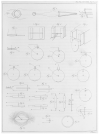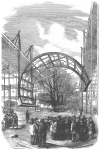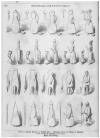SERIALITY AND SCIENTIFIC OBJECTS IN THE NINETEENTH CENTURY
- PMID: 20824147
- PMCID: PMC2931757
- DOI: 10.1177/007327531004800301
SERIALITY AND SCIENTIFIC OBJECTS IN THE NINETEENTH CENTURY
Figures












References
-
-
Lewis Campbell and William Garnett, The life of James Clerk Maxwell, with selections from his correspondence and occasional writings, new edn (London, 1884), 354.
-
-
-
Arthur O. Lovejoy, The great chain of being: A study of the history of an idea (Cambridge, MA, 1964), 242–87; William F. Bynum, “The great chain of being after 40 years: An appraisal”, History of science, xiii (1975), 1–28.
-
-
-
E.g., Joseph O’Connell, “Metrology: The creation of universality by the circulation of particulars”, Social studies of science, xxiii (1993), 129–73; M. Norton Wise (ed.), The values of precision (Princeton, 1995); Theodore M. Porter, Trust in numbers: The pursuit of objectivity in science and public life (Princeton, 1995); Bruce J. Hunt, “Doing science in a global empire: Cable telegraphy and electrical physics in Victorian Britain”, in Bernard Lightman (ed.), Victorian science in context (Chicago, 1997), 312–33; Simon Schaffer, “Metrology, metrication, and Victorian values”, ibid., 438–74; Volker Hess (ed.), Normierung der Gesundheit: Messende Verfahren der Medizin als kulturelle Praktik um 1900 (Husum, 1997); Graeme J. N. Gooday, The morals of measurement: Accuracy, irony and trust in late Victorian electrical practice (Cambridge, 2004); and (for literature reviews) Arne Hessenbruch, “Metrology” and “Standardization”, in idem (ed.), Reader’s guide to the history of science (London, 2000), 477–80 and 704–6.
-
-
-
Oxford English dictionary, s.v. “series”; Emile Littré, Dictionnaire de la langue française (4 vols, Paris, 1877), s.v. “série”; Jacob Grimm and Wilhelm Grimm, Deutsches Wörterbuch, viii (Leipzig, 1893), cols 636–55.
-
-
-
Lovejoy, op. cit. (ref. 2), 236. On missing links in nineteenth-century culture see Gillian Beer, Open fields: Science in cultural encounter (Oxford, 1996), 115–45; and James W. Cook, The arts of deception: Playing with fraud in the age of Barnum (Cambridge, MA, 2001).
-
Grants and funding
LinkOut - more resources
Full Text Sources

